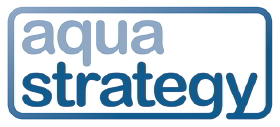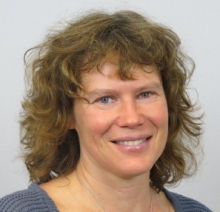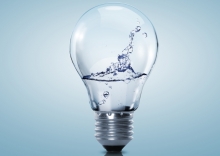Issue:
With around 2000 medical substances in use in Sweden in products numbering ten times this figure, the recent report by the Swedish Environmental Protection Agency recommending action to remove pharmaceuticals from sewage drew in particular on a report giving an updated review of the effects of pharmaceuticals in the environment. Keith Hayward spoke with Dr Petra Wallberg, part of the team from consultancy Sweco who prepared this report, about the case for action on pharmaceuticals in Sweden.

With Sweden’s government moving towards action on pharmaceuticals and micropollutants more generally, it faces the question of how to implement this action in practice.
A recent report by consultancy Sweco provided up-to-date insights into the presence and effects of pharmaceuticals in the aquatic environment, prepared as input to the Swedish Environmental Protection Agency’s recent report to government.
Given the complexity of the issue of pharmaceuticals, prioritisation is likely to be one of the important features of any future plan of action. A key aim of the report was therefore to provide an assessment to support progress on this issue.
The report concludes that the probability of finding high concentrations in receiving waters does not depend primarily on the size of the wastewater treatment plant. Rather it is a combination of the concentrations in the effluent and the volumes of water circulating in the receiving waters.
This aspect of the report is as might be expected – the impact on aquatic life depends upon the concentration of chemicals present, making dilution and dispersal in the environment an important factor in determining whether environmental quality standards or effect concentrations are exceeded.
A high concentration of pollutants coupled with a low dilution factor is likely to be of greatest concern, and this suggests that treatment plants would need to be considered on a case by case basis to establish whether treatment is needed because of such concerns.
The report includes an evaluation based on data on 25 pharmaceutical substances from 15 Swedish wastewater treatment plants. It also includes data from nine plants on a total of 38 other substances, grouped as fluorinated substances, chlorophenol or similar, musk substances, organophosphates / phosphate esters, and organo-tin compounds.
The report presents pharmaceutical results on plants and their receiving waters, ranging in size from Stockholm and Gothenburg as the largest down to small plants serving just a few thousand population equivalents.
‘We categorised the conclusions into three different groups,’ explains Dr Petra Wallberg, one of the Sweco team who prepared the report. For one of these groups, representing three of the treatment plants, there is a high risk of concentrations exceeding effect levels. This included the plants serving the towns of Uppsala and Eslöv.
For a second group, of four plants including Stockholm, there is a high risk of concentrations exceeding effect levels under certain conditions, such as at low water.
Large volume concerns
The third grouping, of six plants including Gothenburg, are classified as ‘low concentrations in the immediate area’. But this is not to say these plants are unimportant. In particular, the Sweco reports highlights evidence, such as that gathered recently to understand the impact of pharmaceuticals in the Baltic Sea region, about the persistence and bioaccumulation of pharmaceutical substances.
Studies have, for example, investigated pharmaceuticals in the waters around Gothenburg. ‘Although you can’t detect them in the water, you can find them in blue mussels,’ says Wallberg. The studies have shown that a range of pharmaceuticals can be found in the tissues of blue mussels at concentrations above 100µg/kg, as well as in the tissues of eel and flounder, for samples taken north of Gothenburg. Wallberg adds that pharmaceuticals can also be detected in pure water samples taken from within the Baltic Sea itself, which is an enclosed area with many wastewater plants discharging into it.
Substances may well be present in water at concentrations below the limit of detection, but these findings indicate a need to look at possible impacts more widely. All sources would contribute to such accumulation, but the Sweco report recommends that attention is given to the biggest sources. ‘Our assessment is therefore that there is a need for advanced treatment in WWTP that emit the largest quantities of pharmaceuticals and other hazardous substances into the sea,’ the report states.
Prioritisation and other priorities
The report also points out that the impact of pharmaceuticals can be greater where there are several treatment plants discharging to the same waters, especially during times of low flow. It recommends that these areas be given prominence in any investigation of advanced treatment needs. It also points out that there is likely to be greater impact where there are a number of pharmaceutical substances with the same mode of action.
The question then is of how to prioritise. ‘First of all, those wastewater treatment plants that emit the largest quantity of pharmaceuticals and other hazardous substances into the sea, they should be prioritised,’ says Wallberg. In effect this means the treatment plants of the largest urban areas.
She adds that there should also be priority attention given to situations where there are several wastewater treatment plants within the same catchment area, since the impact is probably greater. This is especially the case during periods of low water flow, particularly during the summer, when there is most reproductive activity. ‘It is a very sensitive period from an ecological point of view,’ says Wallberg.
Regulatory challenges
The Swedish EPA’s report to government contained an overall recommendation for action on pharmaceuticals. The input provided by the Sweco report was based on making a comparison between the concentrations of pharmaceuticals and other substances detected and environmental quality standards (EQS) or known effect concentrations. But this remains an area where much is still not know about the compounds in use, meaning one of the challenges of taking the recommendation forward is the relative lack in this area of EQS values, for example.
Attention tends to be focused on those substances released in greatest amounts. Wallberg notes that this does always take account of whether those substances degrade rapidly in the environment. ‘You can release a lot if it is going to break down out in the water and not be an environmental concern,’ she says. Monitoring can also be driven by which substances are more readily measured. ‘Now the monitoring is more based on what we can monitor,’ she adds.
Monitoring needs to be directed according to which substances are of greatest concern, Wallberg believes. This need and the challenges of detection suggest greater use could be made of monitoring involving organisms that accumulate compounds, such as blue mussel, says Wallberg. It also suggests a need for more progress in the area of EQS values. ‘I think we have to get more knowledge about what makes them an environmental problem, because there are so few EQS values,’ says Wallberg.
Keywords:
- Sweden, Sweco, pharmaceuticals, micropollutants






